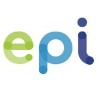
i
Gif
Technologies
Filter interviews by
Gif Technologies Interview Questions and Answers
14 Interview questions
WebDriver is a tool for automating web application testing.
WebDriver is a web automation tool that allows you to control a browser from your code.
It supports multiple programming languages like Java, Python, etc.
WebDriver can interact with web elements like buttons, text fields, etc.
It can simulate user interactions such as clicking, typing, etc.
WebDriver is commonly used for automated testing of web applications.
Abstract class can have both abstract and non-abstract methods, while interface can only have abstract methods.
Abstract class can have constructor, fields, and methods, while interface cannot have any implementation.
A class can inherit only one abstract class but can implement multiple interfaces.
Abstract class is used to provide a common base for multiple derived classes, while interface is used to define a contr...
An object is a self-contained entity that consists of properties and methods to perform specific tasks.
Objects are instances of classes in object-oriented programming.
They have attributes (properties) and behaviors (methods).
Example: A car object can have properties like color, model, and methods like start(), stop().
Equality in SQL refers to comparing two values to see if they are the same.
In SQL, equality is determined using the = operator.
It is used in WHERE clauses to filter data based on specific values.
Example: SELECT * FROM table WHERE column_name = 'value';
Indexes are data structures that improve the speed of data retrieval operations in databases.
Indexes are used to quickly locate data without having to search every row in a database table.
They are created on columns in a database table to speed up the data retrieval process.
Examples of indexes include primary keys, unique keys, and non-unique keys.
Constructor is a special type of method in a class that is automatically called when an object of that class is created.
Constructors have the same name as the class they belong to
They can be used to initialize the object's state or perform any necessary setup
Constructors can be parameterized to accept arguments during object creation
Example: public class Person { public Person(String name) { this.name = name; }}
Different types of joins are Inner Join, Left Join, Right Join, and Full Join.
Inner Join: Returns rows when there is a match in both tables.
Left Join: Returns all rows from the left table and the matched rows from the right table.
Right Join: Returns all rows from the right table and the matched rows from the left table.
Full Join: Returns rows when there is a match in one of the tables.
Stored Procedure is a precompiled set of SQL statements while Function is a reusable code block that returns a value.
Stored Procedure can perform multiple operations and can return multiple values, while Function returns only one value.
Stored Procedure can have input and output parameters, while Function can only have input parameters.
Stored Procedure can call a Function, but a Function cannot call a Stored Proced...
Clustered index physically reorders the data in the table while non-clustered index creates a separate structure.
Clustered index determines the physical order of data rows in a table.
Non-clustered index creates a separate structure to store the index data.
A table can have only one clustered index but multiple non-clustered indexes.
Clustered index is faster for retrieval but slower for insert and update operations.
...
Delete removes rows one by one and can be rolled back, while Truncate removes all rows at once and cannot be rolled back.
Delete is a DML command while Truncate is a DDL command.
Delete can be rolled back using a transaction, while Truncate cannot be rolled back.
Delete fires triggers on each row deletion, while Truncate does not fire triggers.
Delete is slower as it removes rows one by one, while Truncate is faster a...
Gif Technologies Interview Experiences
3 interviews found
I applied via Approached by Company and was interviewed in May 2024. There were 3 interview rounds.
(1 Question)
- Q1. What is webdriver.
- Ans.
WebDriver is a tool for automating web application testing.
WebDriver is a web automation tool that allows you to control a browser from your code.
It supports multiple programming languages like Java, Python, etc.
WebDriver can interact with web elements like buttons, text fields, etc.
It can simulate user interactions such as clicking, typing, etc.
WebDriver is commonly used for automated testing of web applications.
(1 Question)
- Q1. Technical skills
(1 Question)
- Q1. Technical scenarios
Interview Preparation Tips
So finally HR was discussing the salary with me and finalize the budget.
But after some days, I receive one call informing that we can not proceed with your application as senior management is not ready for the offered budget.
It shows that your internal communication is missing here.
So they completely wasted my time.
Skills evaluated in this interview
I applied via LinkedIn and was interviewed before Nov 2023. There was 1 interview round.
(15 Questions)
- Q1. What is a Class?
- Ans.
A class is a blueprint for creating objects in object-oriented programming.
Classes define the properties and behaviors of objects.
Objects are instances of classes.
Classes can inherit properties and behaviors from other classes.
Example: Class 'Car' may have properties like 'color' and 'model', and behaviors like 'drive' and 'stop'.
- Q2. What is object?
- Ans.
An object is a self-contained entity that consists of properties and methods to perform specific tasks.
Objects are instances of classes in object-oriented programming.
They have attributes (properties) and behaviors (methods).
Example: A car object can have properties like color, model, and methods like start(), stop().
- Q3. What is Constructor?
- Ans.
Constructor is a special type of method in a class that is automatically called when an object of that class is created.
Constructors have the same name as the class they belong to
They can be used to initialize the object's state or perform any necessary setup
Constructors can be parameterized to accept arguments during object creation
Example: public class Person { public Person(String name) { this.name = name; }}
- Q4. What is OOPs? What are its types?
- Ans.
OOPs stands for Object-Oriented Programming. It is a programming paradigm based on the concept of objects.
OOPs focuses on creating objects that contain both data and methods to manipulate that data.
The four main principles of OOPs are Inheritance, Encapsulation, Abstraction, and Polymorphism.
Types of OOPs include Class-based and Prototype-based.
Examples of OOPs languages include Java, C++, and Python.
- Q5. What are access Modifiers? What are its types?
- Ans.
Access modifiers are keywords in programming languages that define the accessibility of classes, methods, and other members.
Types of access modifiers in C# are public, private, protected, internal, protected internal.
Public - accessible from any other class.
Private - accessible only within the same class.
Protected - accessible within the same class or derived classes.
Internal - accessible within the same assembly.
Prote...
- Q6. Difference between Abstract Class and Interface?
- Ans.
Abstract class can have both abstract and non-abstract methods, while interface can only have abstract methods.
Abstract class can have constructor, fields, and methods, while interface cannot have any implementation.
A class can inherit only one abstract class but can implement multiple interfaces.
Abstract class is used to provide a common base for multiple derived classes, while interface is used to define a contract f...
- Q7. What is Garbage collection in C#?
- Ans.
Garbage collection in C# is an automatic memory management process that deallocates memory that is no longer in use.
Garbage collection is a process where the runtime environment automatically deallocates memory that is no longer needed by the program.
It helps in preventing memory leaks and ensures efficient memory usage.
Garbage collection in C# is performed by the Common Language Runtime (CLR) and uses algorithms like ...
- Q8. What is Ref and Out parameters?
- Ans.
Ref and Out parameters are used in C# to pass arguments by reference instead of by value.
Ref parameters are used to pass arguments by reference, allowing the called method to modify the value of the argument.
Out parameters are similar to ref parameters, but they do not require the caller to initialize the parameter before calling the method.
Example: void CalculateArea(ref int length, int width) { length = length * widt...
- Q9. What are delegates?
- Ans.
Delegates are type-safe function pointers in C# that allow methods to be passed as parameters.
Delegates are similar to function pointers in C++.
Delegates can be used to create callback functions.
Delegates are used in event handling in C#.
Delegates can be multicast, meaning they can hold references to multiple methods.
Example: delegate void MyDelegate(string message);
- Q10. What is Equality and Equal in Sql?
- Ans.
Equality in SQL refers to comparing two values to see if they are the same.
In SQL, equality is determined using the = operator.
It is used in WHERE clauses to filter data based on specific values.
Example: SELECT * FROM table WHERE column_name = 'value';
- Q11. What is difference between Delete and Truncate?
- Ans.
Delete removes rows one by one and can be rolled back, while Truncate removes all rows at once and cannot be rolled back.
Delete is a DML command while Truncate is a DDL command.
Delete can be rolled back using a transaction, while Truncate cannot be rolled back.
Delete fires triggers on each row deletion, while Truncate does not fire triggers.
Delete is slower as it removes rows one by one, while Truncate is faster as it ...
- Q12. What is Clustered and Non clustered Index?
- Ans.
Clustered index physically reorders the data in the table while non-clustered index creates a separate structure.
Clustered index determines the physical order of data rows in a table.
Non-clustered index creates a separate structure to store the index data.
A table can have only one clustered index but multiple non-clustered indexes.
Clustered index is faster for retrieval but slower for insert and update operations.
Non-c...
- Q13. What is Indexes?
- Ans.
Indexes are data structures that improve the speed of data retrieval operations in databases.
Indexes are used to quickly locate data without having to search every row in a database table.
They are created on columns in a database table to speed up the data retrieval process.
Examples of indexes include primary keys, unique keys, and non-unique keys.
- Q14. What are different types of Joins?
- Ans.
Different types of joins are Inner Join, Left Join, Right Join, and Full Join.
Inner Join: Returns rows when there is a match in both tables.
Left Join: Returns all rows from the left table and the matched rows from the right table.
Right Join: Returns all rows from the right table and the matched rows from the left table.
Full Join: Returns rows when there is a match in one of the tables.
- Q15. Difference between Stored Procedure and Function?
- Ans.
Stored Procedure is a precompiled set of SQL statements while Function is a reusable code block that returns a value.
Stored Procedure can perform multiple operations and can return multiple values, while Function returns only one value.
Stored Procedure can have input and output parameters, while Function can only have input parameters.
Stored Procedure can call a Function, but a Function cannot call a Stored Procedure.
S...
Interview Preparation Tips
- C#
- ASP.Net MVC
- MS SQL
Skills evaluated in this interview
Interview Questionnaire
1 Question
- Q1. Very nice technical interview
Top trending discussions






Interview questions from similar companies

I applied via Shine and was interviewed before Mar 2021. There were 3 interview rounds.
(4 Questions)
- Q1. Why are you looking for a change?
- Ans.
I'm seeking new challenges and opportunities for growth that align with my career goals and personal aspirations.
Desire for professional growth: I'm looking to expand my skill set and take on more leadership responsibilities.
Seeking a better cultural fit: My current company has a different work culture than what I thrive in; I value collaboration and innovation.
Interest in new technologies: I'm eager to work with cutti...
- Q2. Where do you see yourself in 5 years?
- Ans.
In five years, I envision myself as a lead engineer, driving innovative projects and mentoring the next generation of developers.
I aim to lead a team on impactful projects, such as developing scalable applications that enhance user experience.
I plan to deepen my expertise in emerging technologies like AI and machine learning, contributing to cutting-edge solutions.
I aspire to mentor junior engineers, sharing knowledge ...
- Q3. What are your strengths and weaknesses?
- Ans.
I excel in problem-solving and collaboration, but I sometimes struggle with delegation and over-committing to projects.
Strength: Strong problem-solving skills, demonstrated by successfully debugging complex issues in a high-pressure environment.
Strength: Excellent collaboration, as seen in my role leading cross-functional teams to deliver projects on time.
Weakness: Difficulty in delegation, which I am addressing by men...
- Q4. Tell me about yourself.
Interview Preparation Tips

I applied via Naukri.com and was interviewed before Sep 2019. There were 6 interview rounds.
Interview Questionnaire
3 Questions
- Q1. IQ Test
- Q2. Machine Test
- Q3. Face To Face
Interview Preparation Tips
1. IQ Test
2. Machine Test
3. Face to Face
IQ Test is not so tough but prepare well Machine Test
Machine Test Question are like :-
Q.1 - We declare a variable in C++ like "is_this_a_variable" and in Java like "IsThisAVariable". There is underscore in between every word and first alphabet of every word is in lowercase in C++ and in Java first alphabet is in capital without underscore. Create a program in which if user input a string in a C++ variable format it will convert the input in java variable format.
Q2. Count the frequency of a string.
user input string - pqhphi
output-
p - 2
q - 1
h - 2
i - 1
Be strong in algorithms and data structure.

I appeared for an interview in Aug 2017.
Interview Preparation Tips
Duration: 1 hour 30 minutes
Total Questions: 60
Round: Technical Interview
Experience: Questions about DS , CN and basic resume
Round: Technical Interview
Experience: Questions about RT OS and memory mapping. And other operating system related questions.
Projects done so far.

I appeared for an interview in Aug 2017.
Interview Questionnaire
8 Questions
- Q1. Basics of C
- Q2. Puzzles on data structures
- Q3. Asked on project
- Q4. C basics
- Q5. 3 basic and simple codes
- Q6. Family background
- Q7. How was technical interviews
- Q8. Why should we not hire you
- Ans.
I lack experience in a specific technology required for the role.
I may not have experience with a specific programming language or framework mentioned in the job description.
I may not have worked on projects similar to what your company is working on.
I may not have experience with certain tools or technologies that are crucial for the role.
Interview Preparation Tips
Experience: It was just mcq questions but had negative marking
Duration: 1 hour 30 minutes
Total Questions: 60
Round: Technical Interview
Experience: It was cool and interactive round and was fun
Round: Technical Interview
Experience: It was interesting but I fumbled a little
Round: HR Interview
Experience: It was ok
College Name: Cummins College Of Engineering For Women (CCOEW)

I applied via Campus Placement and was interviewed in Dec 2016. There were 5 interview rounds.
Interview Questionnaire
14 Questions
- Q1. Four people and torch problem?
- Q2. What is the difference between AC and DC?
- Ans.
AC and DC are two types of electrical current with different characteristics.
AC stands for Alternating Current, while DC stands for Direct Current.
AC periodically changes direction, while DC flows in one direction.
AC is commonly used in household electrical systems, while DC is used in batteries and electronic devices.
AC can be easily transformed to different voltage levels using transformers, while DC requires convert...
- Q3. Fill the cells in the pyramid?
- Ans.
Fill the cells in the pyramid
The pyramid is a pattern of numbers or characters arranged in a triangular shape
Each row of the pyramid has one more cell than the previous row
Start filling the pyramid from the top and move downwards
The cells can be filled with any desired numbers or characters
- Q4. What is alternator and generator?
- Ans.
An alternator and generator are devices that convert mechanical energy into electrical energy.
Both alternators and generators are used to generate electricity.
They work on the principle of electromagnetic induction.
Alternators are commonly used in modern vehicles to charge the battery and power the electrical systems.
Generators are often used as backup power sources during power outages.
Examples of alternators include ...
- Q5. What is the complexity of quick sort?
- Ans.
Quick sort has an average and worst-case time complexity of O(n log n).
Quick sort is a divide-and-conquer algorithm.
It selects a pivot element and partitions the array around the pivot.
The average and worst-case time complexity is O(n log n).
However, in the worst-case scenario, it can have a time complexity of O(n^2).
- Q6. What are interesting u did?
- Ans.
I developed a mobile app for tracking daily water intake and hydration levels.
Researched best practices for hydration tracking
Designed user-friendly interface for inputting water intake
Implemented data visualization for tracking hydration levels
Tested app with focus groups for feedback
Continuously updated app based on user suggestions
- Q7. Explain SHA Algorithm?
- Ans.
SHA Algorithm is a cryptographic hash function that takes an input and produces a fixed-size output.
SHA stands for Secure Hash Algorithm.
It is widely used in various security applications and protocols.
SHA-1, SHA-256, SHA-384, and SHA-512 are common variants of SHA.
It generates a unique hash value for each unique input.
The output is a fixed length, regardless of the input size.
SHA is used for data integrity, password h...
- Q8. 5 heads and two tails, separate into two groups such that two groups should have equal number of tails?
- Q9. Delete a node in linked list?
- Ans.
To delete a node in a linked list, we need to adjust the pointers of the previous node and the next node.
Find the node to be deleted
Adjust the pointers of the previous node and the next node
Free the memory of the deleted node
- Q10. Tell me about yourself?
- Ans.
I am a passionate software engineer with experience in developing web applications and a strong background in computer science.
Experienced in developing web applications using technologies like HTML, CSS, JavaScript, and React
Strong background in computer science with knowledge of data structures and algorithms
Proficient in programming languages such as Java, Python, and C++
Familiar with Agile development methodologies...
- Q11. What are the challenges you faced in the interns?
- Ans.
As an intern supervisor, I faced challenges in terms of communication, technical skills, and time management.
Communication barriers due to language or cultural differences
Lack of technical skills or knowledge required for the job
Difficulty in managing time and meeting deadlines
Inability to work independently or as part of a team
Resistance to feedback or constructive criticism
Limited exposure to real-world scenarios and...
- Q12. Preference of job place?
- Ans.
I prefer a job place that offers a collaborative and innovative work environment.
Prefer a workplace that encourages teamwork and communication
Value opportunities for learning and growth
Seek a company that fosters creativity and innovation
- Q13. How will you solve the disputes?
- Ans.
I will solve disputes by promoting open communication, active listening, and finding mutually beneficial solutions.
Encourage open and honest communication between parties involved
Actively listen to each party's concerns and perspectives
Identify common goals and interests to find mutually beneficial solutions
Mediate discussions and facilitate negotiations if necessary
Document agreements and ensure follow-up to prevent f...
- Q14. What is your view about Qualcomm?
- Ans.
Qualcomm is a leading semiconductor and telecommunications equipment company.
Qualcomm is known for its expertise in wireless technologies and mobile chipsets.
They have developed popular Snapdragon processors used in smartphones and tablets.
Qualcomm has made significant contributions to the advancement of 5G technology.
The company has a strong patent portfolio and is involved in licensing its technology to other manufac...
Interview Preparation Tips
Experience: Simple aptitude questions and technical questions which includes OOPS, Computer networks
Duration: 1 hour 25 minutes
Total Questions: 50
College Name: IIT Madras
Skills evaluated in this interview

I appeared for an interview in Dec 2016.
Interview Questionnaire
4 Questions
- Q1. Simple algorithm coding questions, e.g.- fibonacci, prime number
- Q2. Some hardware questions
- Q3. Networking questions and some others
- Q4. Intro, strength, weakness, why we hire you, etc. common HR questions
Interview Preparation Tips

I appeared for an interview in Sep 2016.
Interview Questionnaire
1 Question
- Q1. Write a code for scheduling in C
- Ans.
Code for scheduling in C
Define a struct for the task with fields like start time, end time, priority, etc.
Create an array of tasks and sort them based on priority and start time
Implement a scheduling algorithm like Round Robin or Priority Scheduling
Use system calls like fork() and exec() to create and execute processes
Implement synchronization mechanisms like semaphores or mutexes to avoid race conditions
Interview Preparation Tips
Experience: There were 3 sections.Aptitude,C programming,Software / Communication / Hardware
Tips: U should be very fast while solving.Aptitude is normal.C programming qsns mainly consists of simple C like trees,arrays,sorting etc.I chose software for 3rd section as I wanted software profile .It has qsns based on OS(little bit linux),Data structures and Algorithms.
Duration: 2 hours
Total Questions: 60
Round: Technical Interview
Experience: Just asked me qsns related to Data structures
Tips: Solve sums in geeksforgeeks
Round: HR Interview
Experience: Its for fun.HR talks about unrelated things :P .If u got selected for HR,then u are selected for job.
College Name: IIT Kharagpur
Skills evaluated in this interview
Gif Technologies Interview FAQs
Tell us how to improve this page.
Interview Questions for Popular Designations
Overall Interview Experience Rating
based on 6 interview experiences
Difficulty level
Duration
Interview Questions from Similar Companies
Gif Technologies Reviews and Ratings
based on 46 reviews
Rating in categories
|
Software Developer
15
salaries
| ₹2.8 L/yr - ₹7.2 L/yr |
|
Executive - Developer
7
salaries
| ₹4.3 L/yr - ₹8 L/yr |
|
Senior Test Engineer
7
salaries
| ₹4.5 L/yr - ₹5.6 L/yr |
|
Softwaretest Engineer
6
salaries
| ₹3.2 L/yr - ₹6.8 L/yr |
|
System Engineer
4
salaries
| ₹5 L/yr - ₹6 L/yr |

Teleperformance

Optum Global Solutions

FIS

Nagarro
- Home >
- Interviews >
- Gif Technologies Interview Questions








